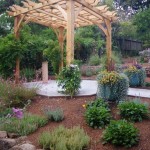
by Avis Licht
Herbs have many uses in the landscape. Many have a culinary use, many are used medicinally, they are generally easy to grow, their flowers are an excellent source of pollen and nectar for birds, bees and insects, often drought resistant and long lived. Well, it doesn’t get much better than that for a multi use plant.
In the two previous posts, I talked about making garden design decisions based on your climate and place and on your desires. When choosing plants to fill in the landscape you not only want to use plants that are pretty and useful, but also “belong” there. By belonging I mean that they fit in with the style of your garden, whether formal or informal, that they will thrive in the conditions and that they work in the scale of the garden.
This is a newly planted garden. The herbs are young and small. When mature they will fill in the area and create a feeling of beauty and lushness. When the herbs have been harvested at the end of the season, there will still be ornamental plants in the garden that keep it looking good over the winter. This is one of the best tricks in an ornamental edible landscape design. Combine your annuals with shrubs and perennials so that you don’t have periods in the garden that look bare.
This particular herb garden has thyme, sage, oregano, tarragon, dill, chives, parsley, cilantro and several varieties of basil. We also used rosemary and thyme to cascade over the wall, with nasturtiums for added color. Many of these plants have edible flowers. The herbs grow quickly and fill in the garden.
The ornamental plants in this bed include Azalea, Pieris, ferns, and Polygala. These are shade loving plants, which we put closer to the tree. We put the herbs in the sunniest part of the bed. It was a little tricky, but you can see by the photos that the herbs grew well even in part shade.
A few of the herbs that are planted more for beauty than culinary use include lavender, salvias, yarrow and ornamental oreganos. By going to your local nurseries you will find appropriate herbs for your garden’s beauty and health. Peruse some of the catalogs in the Resource page of my website and you will find many herbs both common and unusual that will be just right for your garden.
2 Responses to “Designing a Garden with Herbs – for Your Edible Landscape”
Sorry, the comment form is closed at this time.

 Follow
Follow

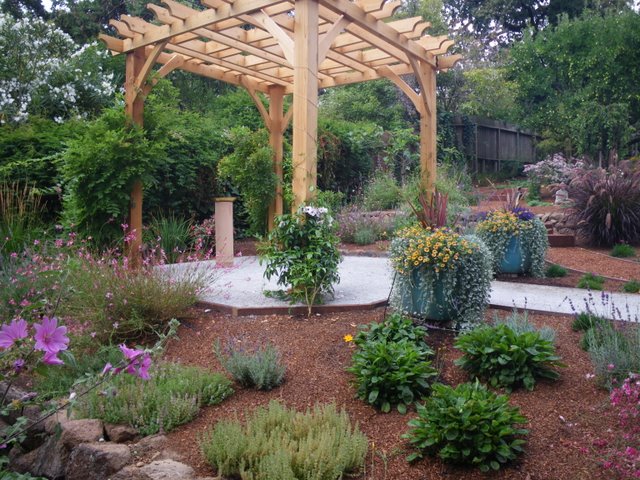
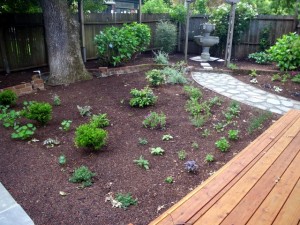
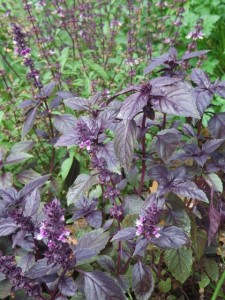
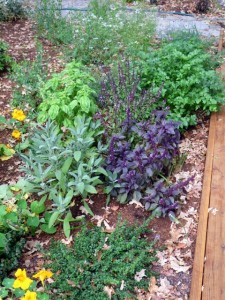
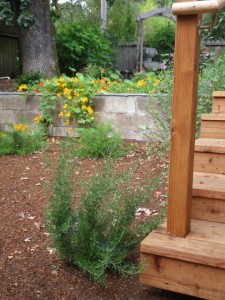
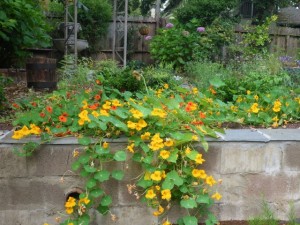
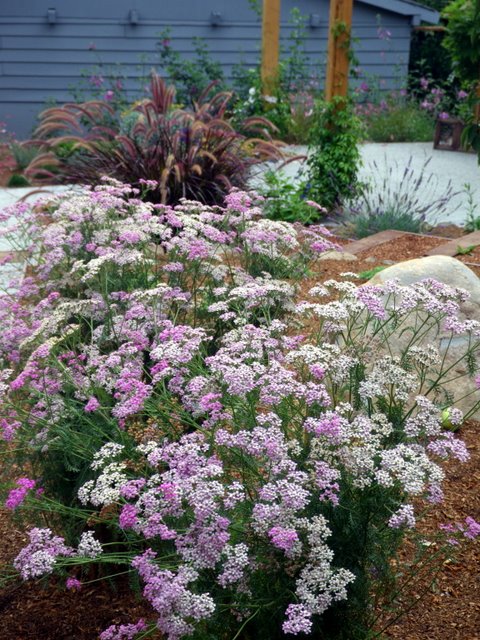
I would like to grow a lot of mint – my plants currently are under a myrtle tree and having a winter hiatus. I think they are peppermint. I bought a spearmint plant at the nursery, and I have to keep it under row cover because it was being eaten. It is spreading, but I can’t harvest any of it. Any ideas for having enough for year round picking?
Dear Sadja, You’re the first person I’ve met who doesn’t have enough mint. Usually once planted, it takes over the garden. Hmmm, what to do. Have you tried putting mint in a pot and keeping it near the house? Warmth in the winter should keep it growing. Be careful of planting too much mint in your garden, because once it starts, you’ll be pulling it out forever. I’ll bring you some on Wednesday, as I have lots. Avis